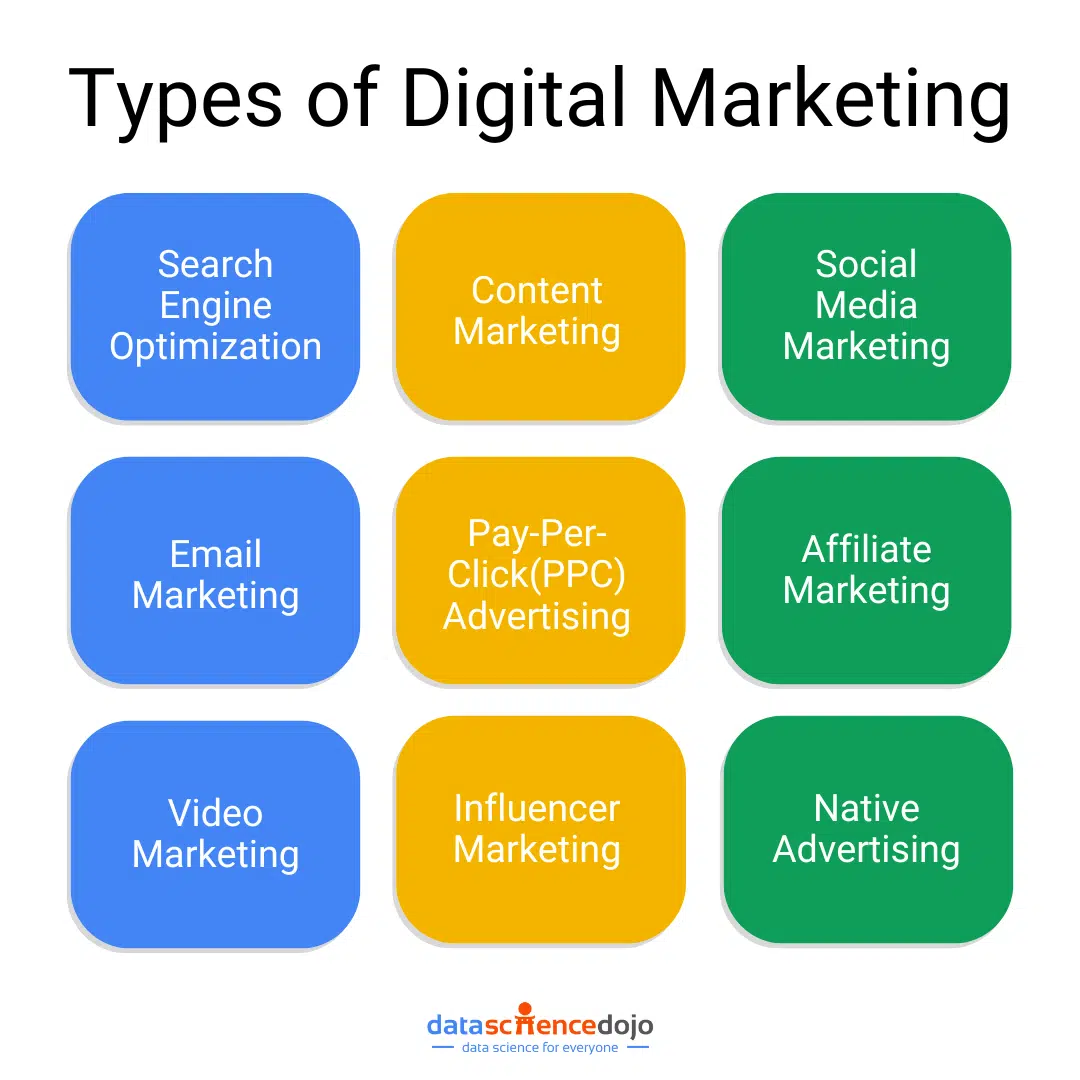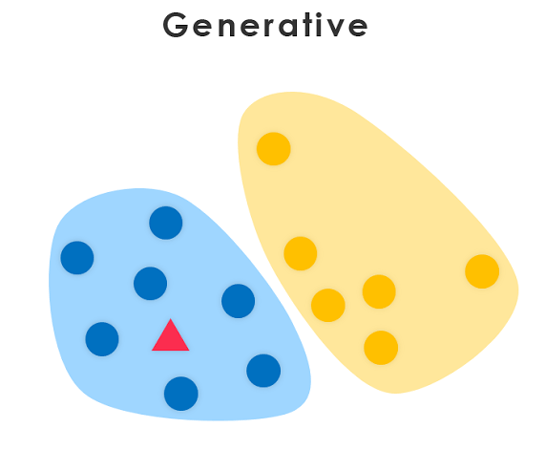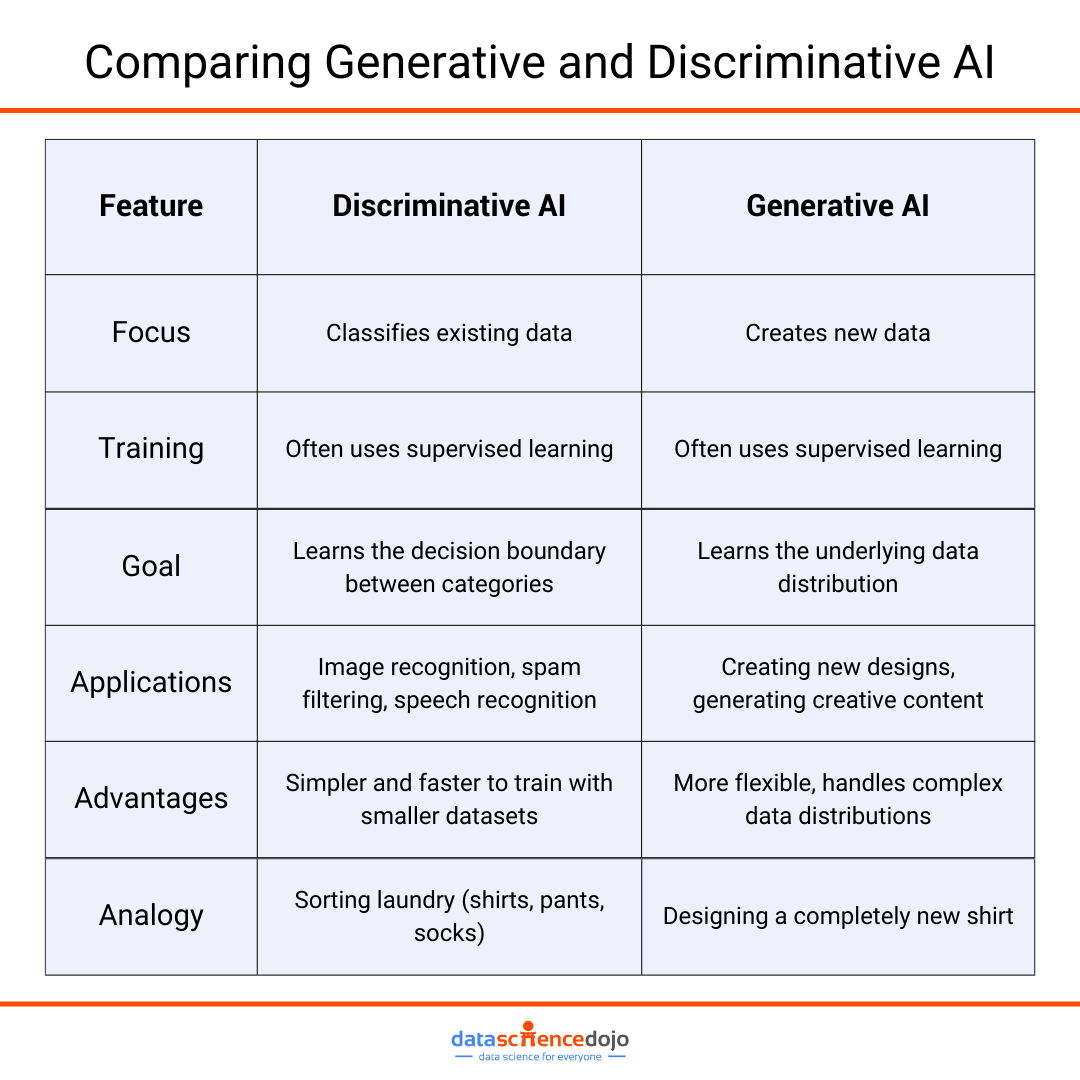In today’s digital age, mastering online marketing is essential for business success. Digital marketing is a vast landscape filled with various strategies and tactics. Understanding these different approaches is crucial for reaching your target audience effectively.
Whether you’re a small business owner or a seasoned marketer, this guide will illuminate the most common types of digital marketing and help you choose the right strategies for your goals.
Why Digital Marketing Matters?
Today, building an online presence isn’t just an option — it’s a must-have for any business that wants to thrive. With more people than ever relying on the internet to discover, research, and buy products or services, having a solid online presence is crucial.
The beauty of digital marketing is that it allows businesses, big or small, to reach a global audience without breaking the bank compared to traditional marketing.
What makes digital marketing even more powerful is its ability to target specific audiences with precision. Companies can tailor their messages to hit the right note with different groups, ensuring that the right people get the right content at the right time.
Read more about data driven marketing
This kind of personalization doesn’t just make customers feel seen—it also boosts engagement and helps convert those clicks into sales, giving businesses a better bang for their buck.
Types of Digital Marketing

1. Search Engine Optimization
SEO is the foundation of successful online visibility. It involves optimizing your website to rank higher in search engine results, making it easier for potential customers to discover your business. This includes both on-page elements like keywords and meta tags, as well as off-page factors like backlinks from other websites.
For example, a local pizzeria can enhance its online presence by optimizing its website for keywords such as “best pizza in town” or “Italian food near me.” This can attract hungry customers searching for delicious food.
Learn more about 9 ML algorithms to use for SEO and marketing
2. Content Marketing
Content marketing is about creating valuable, relevant, and consistent content to attract and retain a clearly defined audience. This can encompass blog posts, videos, articles, podcasts, infographics, and more. The key is to provide content that informs or entertains, rather than overtly promoting your products or services.
For instance, a tech blog can generate a loyal following by offering in-depth articles and tutorials on the latest gadgets. This valuable content not only attracts tech enthusiasts but also creates opportunities to promote relevant products or services.
Here’s a complete guide to SEO optimize your blog
3. Social Media Marketing
Social media platforms like Facebook, Instagram, Twitter, and LinkedIn offer businesses unparalleled opportunities to connect with their audience. By crafting engaging content, building a community, and running targeted ads, you can boost brand awareness and drive website traffic.
A fashion brand might flourish on Instagram by showcasing stylish visuals and interacting with followers through comments and stories. On the other hand, a B2B company could benefit from LinkedIn by sharing industry insights and networking with potential clients.
4. Email Marketing
Email marketing remains one of the most cost-effective ways to nurture leads and retain customers. By sending targeted emails to potential or existing customers, you can build relationships, promote products, and drive sales. Personalization is key to maximizing the impact of your email campaigns.
A fitness gym can effectively use email marketing by providing workout tips, nutritional advice, and exclusive offers to its members. By segmenting their email list, they can deliver tailored content to different groups of subscribers.
Explore the list 6 email marketing campaign metrics to measure your success
5. Pay-Per-Click (PPC) Advertising
PPC advertising involves paying for ads to appear at the top of search engine results or on other websites. You only pay when someone clicks on your ad. Platforms like Google Ads and Bing Ads allow you to create targeted campaigns based on keywords, demographics, and interests.
PPC is ideal for generating immediate traffic, especially for new products or limited-time offers. An e-commerce store selling organic skincare products can use PPC advertising to target keywords like “buy organic skincare.” By bidding on relevant keywords, the store can increase its visibility in search results and attract potential customers.
6. Affiliate Marketing
Affiliate marketing is a performance-based partnership where businesses reward affiliates for driving traffic or sales. Affiliates promote products or services on their websites or social media channels in exchange for a commission.
For example, a fitness equipment company might partner with a popular fitness blogger who includes links to the company’s products in workout guides or review posts. Each time a reader clicks on these links and makes a purchase, the blogger earns a commission, creating a win-win situation for both the affiliate and the business.
7. Video Marketing
Video content has exploded in popularity, with platforms like YouTube, TikTok, and Instagram Reels dominating the digital landscape. Videos can effectively demonstrate products, showcase customer testimonials, or educate viewers.
A fitness brand can create engaging workout videos featuring its products. By sharing these videos on social media, they can build a loyal community and inspire potential customers.
Read more about the top video marketing platforms
8. Influencer Marketing
Influencer partnerships leverage individuals with large online followings to promote products or services. Brands partner with influencers who not only have a strong online presence but also a loyal fan base. These influencers can range from celebrities to niche content creators.
For example, a skincare brand might collaborate with a beauty influencer to review a new product line on Instagram. By sharing sponsored posts, product reviews, or hosting giveaways, influencers can generate excitement and drive sales, significantly enhancing a brand’s credibility.
9. Native Advertising
Native advertising is a form of paid media where the ad experience follows the natural form and function of the user experience in which it is placed. Unlike traditional banner ads, native ads blend seamlessly into the content of a website or platform, making them less intrusive and more engaging for users.
For example, a travel company might create a sponsored article that appears in the editorial feed of a popular travel blog. The article would be written to match the style and tone of the blog, providing useful tips or travel guides that subtly promote the company’s services.
Because native ads are designed to look and feel like the surrounding content, they can be highly effective in capturing the audience’s attention and driving conversions without disrupting the user experience.
Real-World Use Cases of Digital Marketing
-
Starbucks: Seamless Integration with Mobile and Social
Starbucks has nailed digital marketing by blending its mobile app with social media. Their app lets customers order ahead, earn rewards, and get personalized deals—all while staying connected through their social media channels.
By promoting the app on platforms like Instagram and Twitter, Starbucks creates a smooth and engaging experience that keeps customers coming back for more.
Also explore how data science benefits digital marketing
-
Airbnb: Utilizing User-Generated Content to the Fullest
Airbnb is a master at using content created by its community to build its brand. They encourage guests to share their travel stories on social media platforms with branded hashtags, creating a wave of authentic content that resonates with future travelers.
Plus, by teaming up with influencers, Airbnb reaches a wider audience and strengthens its global presence. That’s the power of influencer partnerships!
-
Amazon: Personalization Through Data
Amazon’s success is largely driven by how well they use data to make shopping personal. They analyze everything—from what you’ve browsed to what you’ve bought—and then recommend products that match your tastes.
Here are the fundamentals of marketing analytics that everyone should know
This level of personalization not only makes shopping easier for customers but also boosts Amazon’s sales, showing just how powerful data-driven marketing can be.
Take the Next Step!
The key to successful digital marketing is understanding your target audience, setting clear goals, and selecting the right strategies. While each online growth strategy has its own benefits, combining multiple approaches often leads to the best results.
By creating a well-rounded online strategy, you can boost brand visibility, strengthen customer relationships, and drive business growth.
You can now learn to effectively use data to develop strategic marketing plans and gain data-driven insights.













